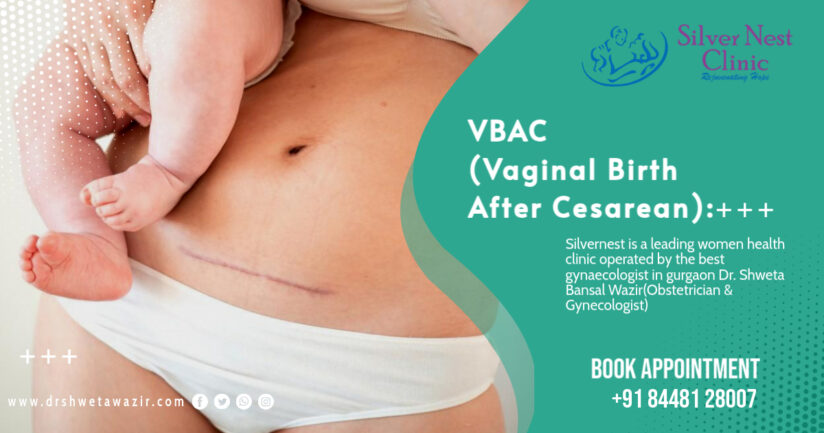Choosing the right delivery option after a cesarean section (C-section) is a deeply personal decision that must be guided by accurate information and expert medical advice. VBAC (Vaginal Birth After Cesarean) offers an alternative to repeat cesarean delivery for many women. This article explains the benefits, risks, and recovery associated with VBAC, empowering you to make an informed choice for your next childbirth experience.
What is VBAC (Vaginal Birth After Cesarean)?
VBAC refers to delivering a baby vaginally after having had a previous C-section. While C-sections involve surgically delivering the baby through an abdominal incision, VBAC allows women the possibility of experiencing a natural vaginal birth. A successful VBAC is achieved when labor progresses normally without the need for surgical intervention. If labor fails to progress or complications arise, an emergency cesarean may be required.
Benefits of VBAC: Why Consider Vaginal Birth After Cesarean?
- Faster Recovery and Shorter Hospital Stay
Compared to C-section, VBAC generally results in a quicker recovery, allowing mothers to resume normal activities sooner.
- Lower Risk of Surgical Complications
Avoiding abdominal surgery reduces the risks of infection, excessive bleeding, and injury to surrounding organs.
- Reduced Risk of Future Pregnancy Complications
Multiple C-sections increase the risk of placental problems and uterine scarring, which may complicate future pregnancies.
- Enhanced Neonatal Benefits
Babies born vaginally often have better respiratory outcomes as they pass through the birth canal, which helps clear fluid from their lungs.
- Personal and Emotional Fulfillment
Many women prefer vaginal delivery for the experience and sense of accomplishment it provides.
Understanding the Risks of VBAC
- Uterine Rupture
The most serious risk associated with VBAC is uterine rupture along the previous C-section scar. While rare (about 0.9% risk with a low transverse incision), it requires immediate medical intervention.
- Emergency Cesarean Section
If VBAC is unsuccessful, an emergency C-section may be necessary, which carries more risks than a planned surgical delivery.
- Infection and Blood Loss
Complications such as infection and increased bleeding can occur, though risks are generally lower with a successful VBAC compared to a repeat C-section.
Factors That Influence VBAC Success Rates
- Type of Previous C-Section Incision: A low transverse incision presents the lowest risk of rupture.
- Number of Previous C-Sections: The success rate is higher if only one prior C-section was performed.
- History of Vaginal Delivery: Women who have previously delivered vaginally have increased chances of a successful VBAC.
- Overall Health: The absence of conditions like obesity, diabetes, or uterine abnormalities boosts VBAC success.
- Baby’s Size and Position: VBAC is more likely to succeed if the baby is of average size and in the correct birthing position.
Is VBAC Safer Than a Repeat C-Section?
VBAC is considered safe for many women when performed under proper medical supervision in a well-equipped facility. However, the decision depends on individual health history, reasons for the previous C-section, and the current pregnancy condition. Discussing these factors with your healthcare provider is critical.
Recovery After VBAC vs. Repeat C-Section
VBAC Recovery:
- Typically involves less postoperative pain.
- Shorter hospital stay, often 24-48 hours.
- Faster return to daily activities.
- Lower need for post-delivery medications.
C-Section Recovery:
- Longer hospital stay, usually 3-5 days.
- Higher risk of postoperative complications.
- Longer duration before resuming normal activities.
When is VBAC Not Recommended?
VBAC may not be advisable in certain situations, including:
- High vertical (classical) uterine incision from a previous C-section.
- History of uterine rupture.
- Multiple prior C-sections without vaginal delivery.
- Placental complications like placenta previa or accreta.
- Significant maternal health conditions increasing labor risk.
Your healthcare provider will review your medical records, previous delivery details, and current pregnancy status before recommending VBAC.
Key Questions to Discuss with Your Healthcare Provider
- What type of uterine incision did I have previously?
- What are my chances of a successful VBAC?
- What is the facility’s emergency readiness for VBAC attempts?
- What monitoring and interventions are available during labor?
- What are the specific risks in my case?
Expert Care for VBAC at Silver Nest Clinic, Gurgaon
At Silver Nest Clinic, led by Dr. Shweta Bansal Wazir, we offer comprehensive consultation and care for women considering VBAC. With over two decades of experience in obstetrics and gynecology, Dr. Wazir ensures a thorough evaluation of your medical history and pregnancy conditions, providing personalized advice on the safest delivery method for you.
📞 Contact Us: +91 84481 28007
🌐 Visit: www.drshwetawazir.com
Conclusion: Is VBAC Right for You?
VBAC offers a safe and viable option for many women wishing to experience vaginal birth after a cesarean. While it presents certain risks, proper medical assessment, hospital readiness, and informed decision-making significantly enhance its safety profile. Always consult with your healthcare provider to understand the best option for you and your baby.
VBAC is not just a medical decision, it’s a personal choice best made with professional guidance.
For expert consultation on VBAC and pregnancy care, reach out to Silver Nest Clinic today!


Leave A Comment